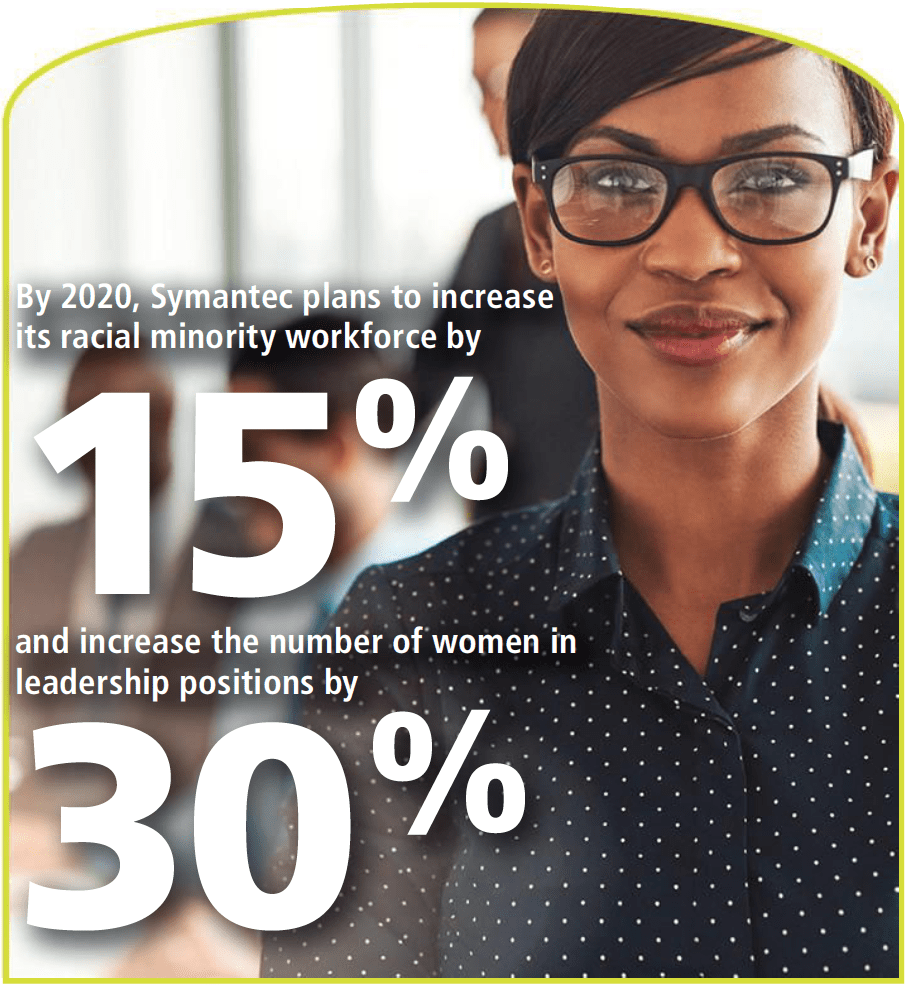Strategies to help organizations build a connection between D&I goals and business results.
By Amy Cappellanti-Wolf
“Culture eats strategy for breakfast.” That’s a quote from renowned management guru Peter Drucker -one that vividly illustrates the delicate and important relationship between a company’s culture and its business goals. Many organizations invest a great deal of time and money into building that elusive “winning culture” through in-depth engagement studies and large-scale initiatives that result in multi-year strategies for change. But it can be easy to overlook some of the simple ways to create a place where people feel inspired to reach their potential and help their company do the same.
Headlines over the past year -from the #MeToo movement to Black Lives Matter -are stark reminders of some basic human needs: People want to be valued for who they are as unique individuals, to be treated with respect and dignity, and to have a voice and a safe environment to use it. When these needs are not met in the workplace, the results can be distrust and lack of motivation.
If culture underpins a company’s ability to win, getting it right should be a critical priority. And an important aspect to company culture is diversity and inclusion (D&I). This is something that Symantec, a market leader in cyber defense, has worked to achieve since it introduced its first corporate diversity initiatives in 2004. But the tech sector has been under particular scrutiny of late; a dearth of women and minorities coupled with a high turnover rate has only underscored a major gap in diversity in the industry. According to a 2017 study from the Kapor Center for Social Impact and Harris Poll, eight out of 10 employees say they’ve experienced “unfair treatment,” making discrimination and exclusive business practices the biggest driver of turnover in the tech industry.
Symantec is one of the first tech companies to release data on the number of women and minorities among its ranks and the progress continues. By 2020, Symantec plans to increase its racial minority workforce by 15 percent and increase the number of women in leadership positions by 30 percent as part of a broader strategy focusing on talent acquisition, leadership accountability, and talent development.
Apart from setting D&I goals, the company visibly supports a culture of inclusion at the highest levels of its leadership. Inclusive leadership is the new muscle that managers need to develop in order to attract increasingly diverse global talent, enter new markets, and sustain a company culture of inclusion and belonging. In 2017, Symantec CEO Greg Clark signed the CEO Action for Diversity & Inclusion Pledge, along with 450 other CEOs from the world’s largest companies, committing to advance diversity and inclusion in the workplace.
 In the past year, Symantec has taken steps to ensure that its culture demonstrates diversity, equity, and inclusion at every level of the organization. From company-wide surveys to launching an inclusion council and delivering a leader success module on diversity and inclusive leadership, the company is building a set of tools and practices to better prepare leaders and teams.
In the past year, Symantec has taken steps to ensure that its culture demonstrates diversity, equity, and inclusion at every level of the organization. From company-wide surveys to launching an inclusion council and delivering a leader success module on diversity and inclusive leadership, the company is building a set of tools and practices to better prepare leaders and teams.
Symantec has also taken a close look at day-to-day activities to ensure inclusivity is reflected in its practices. Some of these best practices include:
- Gender-neutral job descriptions. Removing words that imply gender bias can make a big difference. For example, the term “strategic thinker,” which may be perceived as having a masculine tone, can be swapped for “creative thinker,” which is more appealing.
- Diversity in job interviews. Having a diverse set of voices when it comes to interviewing prospective employees has several benefits. Ensuring there are more women, minorities, and differently-abled team members during the interview process allows potential new team members to truly see themselves in the work environment.
- Alternative recruiting channels. Partnering with professional organizations that represent women, people of color, veterans, persons with disabilities, and other groups via online recruiting platforms that focus on underrepresented populations will help enable a diverse talent pool.
- Inclusion-focused teams. Make D&I a regular part of the company conversation. Encourage managers to talk about diversity, equity, and inclusion with employees and to actively monitor bias in hiring and other decisions. Symantec has “Inclusion Change Teams” which are made up of company leaders who ensure that Symantec’s diversity initiatives support its business goals. The concept was introduced this year with eight active teams globally to date.
- Diversity, equity, and inclusion dashboards. Visual tools are a good way to show a snapshot of diversity and inclusion metrics, including the retention rate for women, the number of women in leadership positions, employee engagement numbers, and inclusion sentiment, which is the percentage of employees who report feeling welcome and included. These dashboards should be distributed to leaders on a regular basis.
As a global organization with offices in 50 countries, diversity gives Symantec a competitive edge, broadening its talent pool and allowing it to create a workforce that better serves its incredibly diverse customer base.
While major initiatives will always be necessary to embed a culture that underpins a company’s business goals, HR plays a critical role in ensuring that culture becomes more than words on a page. A team that feels valued, embraced, and safe drives a culture that meets strategy. It is critical to look to the day-to-day decisions an organization’s leaders make and the behaviors they embrace to really understand whether or not D&I is part of a company’s DNA -whether a culture is driving business results… or devouring them.
Amy Cappellanti-Wolf is the CHRO at Symantec.














